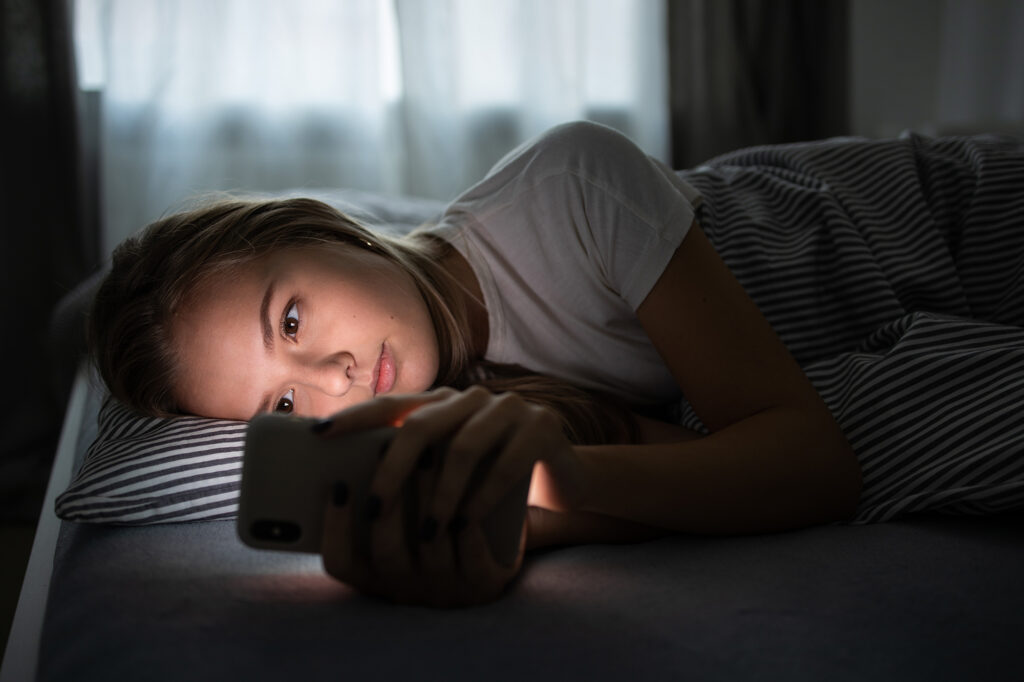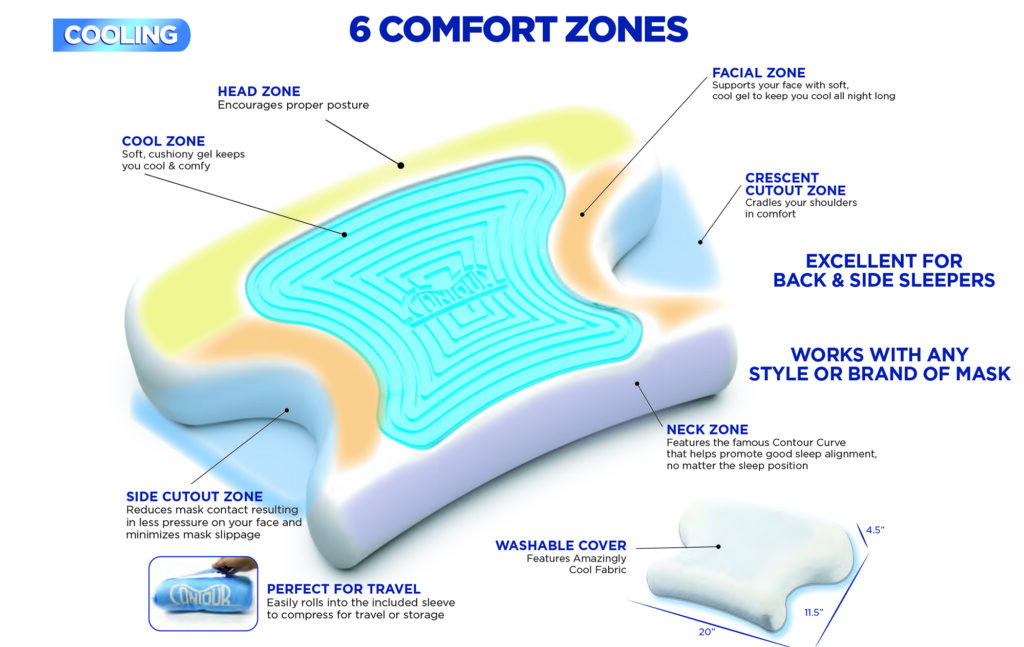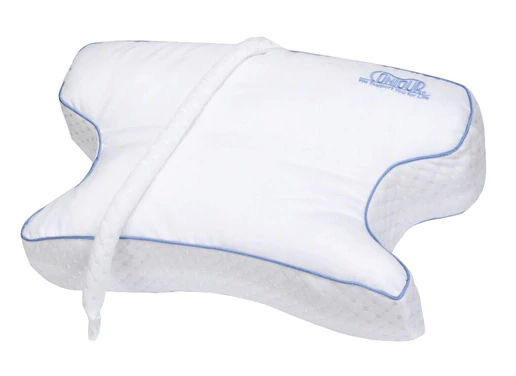Why is a good night’s sleep a challenge for some?
Falling asleep should be as easy as closing your eyes, after a long, hard day; but for many people falling asleep is an ongoing challenge. Sleep disorders, short-term and chronic insomnia, and obstructive sleep apnea are more common than you think:
“Insomnia is the most common sleep disorder, with 30% of adults experiencing short-term insomnia. About 10% of people have long-lasting insomnia. Almost 40% of people report accidentally falling asleep during the day.”
– Cleveland Clinic
“About 50 to 70 million Americans have sleep disorders, and 1 in 3 adults (about 84 million people) do not regularly get the recommended amount of uninterrupted sleep they need to protect their health.”
– Sleephealth.org

While some struggle with falling asleep, others may struggle staying asleep, but if you’re not getting enough sleep, which is at least the 7-8 hours, you’re doing your body, mind and overall healthy short-term and long-term harm. [Read our blog: “Quality of Life comes from Quality of Sleep” ]
“Current evidence supports the general recommendation for obtaining 7 or more hours of sleep per night on a regular basis to promote optimal health among adults aged 18 to 60 years”
– NIH.gov
How can CPAP lead to better sleep?
For those suffering from Obstructive sleep apnea, CPAP can make a huge difference on the quality and quantity of their sleep. How? CPAP therapy works to keep your airways open while you sleep so you can receive the oxygen you need for optimal function. Because of the CPAP machine, the patient will also experience less apneic events. During the apneic event, you can’t breathe in oxygen or exhale carbon dioxide. This results in low levels of oxygen and increased levels of carbon dioxide in the blood. This alerts the brain to resume breathing and cause an arousal, which in turn wakes you up and interrupts the normal circadian rhythm – resulting in poorer quality sleep. CPAP therapy can also significantly reduce your risk for a number of health issues, including cognitive decline, heart disease and stroke.
Even for those using CPAP, especially those who are adjusting to wearing the device, initially falling asleep can be difficult. And so many of us struggle to fall and stay asleep, whether from hormonal shifts, increased stress, side effects of medication, working second or third shifts, or for families with newborns and infants. So what are some tried and true tips and tricks for a better night’s sleep, vetted and recommended by sleep experts, sleep technologists and physicians?
Top Eight Tips for Better Sleep
Tip 1: Improve your Sleep Environment.

Preparation is the key, so getting your room ready an hour before you go to sleep by setting your thermostat to the perfect degree. What is the best room temperature for sleep? Experts say approximately 65 degrees Fahrenheit (18.3 Celsius).
“This may vary by a few degrees from person to person, but most doctors recommend keeping the thermostat set between 60 to 68 degrees Fahrenheit (15.6 to 20 degrees Celsius) for the most comfortable sleep.”
– SleepFoundation.org
When it comes to lighting, a dark room is best for sleep so with the help of light-blocking curtains, and turning off all electronics and bedroom lighting before you go to sleep. If you or your child needs a night light, the best night light colors for sleeping are red light and amber light as they are warm relaxing colors that promote good sleep. Avoiding artificial blue light and bright lights in the evening can help you avoid sleep related issues such as insomnia.
Controlling all the variables in your bedroom may not be as easy when sharing it with a partner or relative, so if you cannot control the temperature and light in your room, invest in some ear plugs and an eye mask. Also, consider using blackout curtains, “white noise” machines, humidifiers, fans and other devices may also contribute to better sleep quality.
Tip 2: Invest in a Good Pillow.
The feel, shape, filling, firmness and density of the pillow that is best for you depends on how you sleep. Soft pillows are ideal for stomach sleepers, while side sleepers typically do better with firmer pillows. Back sleepers may want to consider medium-firm pillows for the best support. When it comes to pillows there are a multitude of choices, there are cooling pillows, body pillows, memory pillows, pillows made to support your neck, foam pillows, microfiber pillows, synthetic down pillows, round, square or contoured pillows. And as many pillows there are, there are as many sites out there reviewing them. Here are a few:
- Good Housekeeping Reviews
- Business Insider Reviews
- Time Magazine
For CPAP users, here are two pillows we recommend:

Contour Home & Travel CPAP Mini Pillow
- Side cutouts – Provide ample space for all types of masks when sleeping on your side or stomach.
- KoolGel – Soft cool gel keeps you cool and comfy all night long.
- Sleeve– Allows you to roll your pillow tight for travel or storage.
- Includes Washable Cover – Features Amazing Cool Fabric
- Helps Reduce Leaks, Noise, Dry Eyes & Mask Lines
- Reduces Mask Slippage
- Soft Cool Gel Keeps You Cool and Comfy All Night Long
- Works with any Style or Brand of Mask
- Excellent for Back & Side Sleepers
Contour Living CPAPMAX CPAP Bed Pillow 2.0

The CPAPMax Pillow 2.0 allows you to sleep comfortably and in compliance with its unique features made especially for nightly PAP Therapy users. This CPAP pillow works with any mask type or brand for improved nighttime comfort and compliance.
- Exclusively Designed For PAP Machine Users!
- Reduces Mask Shifting And Interference!
- Helps Stop Air Leak Noises Which Awaken You!
- Minimizes Pressure on Face
- Provides Better Head, Neck and Shoulder Comfort!
- Removable Layer To Adjust Pillow Thickness!
Tip #3: Tuck yourself in with a good quality blanket.

Blankets and covers are a great way to improve sleep. Why? First, blankets can regulate body temperature because as well sleep our body temperature decreases through the night. So having a breathable blanket appropriate for the season helps maintain optimal sleeping temperature. Second, it may be hard to fall asleep unless we feel the warmth, comfort and security of a blanket. As a child, a security blanket helped chase away the fear of the dark, and as we grow up, we have become accustomed to that feel of being wrapped up in comfort.
Choose breathable fabrics, such as linen, bamboo, cotton; as each of these fabrics are light, breathable, and can wick away moisture on those hot summer nights. If you want a cooling effect, choose breathable blankets over a heavy comforter filled with down or synthetic filling which may increase body temperature and interrupt your sleep. What about weighted blankets? Experts have seen positive results for those suffering from autism, ADHD, insomnia and anxiety. By simulating deep pressure touch, a weighted blanket can reduce your mind and body’s stress and anxiety.
Tip #4: Eat, Drink and Be Sleepy.
A full belly can disrupt your sleep, so give your body adequate time to digest your meal before going to bed. That is why experts suggest stopping eating at least three hours before bedtime, and at the very least avoid a full or heavy meal before bed. Consuming a large meal so close to bedtime can affect digestion, sleep quality and even obesity. When it comes to drinking, do so in moderation so your sleep is not being interrupted by frequent wakings to use the bathroom. If you feel very thirsty before bed, you may want to drink a small glass of water to help you get through the night. When choosing light snacks or drinks before bed, be selective:
- Foods like kiwi, cherries, milk, fatty fish, nuts, turkey, and rice have been found to aid in relaxation and sleep.
- Avoiding caffeinated beverages, such as coffee and tea, and alcohol before bed. Instead drink Chamomile tea, tart cherry juice, passion flower tea, lavender infused team Ashwagandha tea, Valerian tea, Peppermint tea, warm milk, nut milks, and turmeric infused milk (golden milk).
Tip #5: Choose a Bedtime and stick to it.

Your circadian rhythm (your body’s internal clock) works better when you sleep and wake on a routine – including the weekends. Once used to your sleep schedule, your brain will begin winding down for sleep a few hours before your set bedtime. So its recommended to decide on a bedtime and waketime that is realistic and practical for your schedule.
“A consistent sleep schedule helps to maintain the body’s internal clock, or circadian rhythm. And heart rate, blood pressure, and other cardiovascular functions follow circadian patterns.”
– Dr. Carolina Marcus, associate professor of clinical medicine at the University of Rochester Medical Center in Rochester, New York.
Once the bedtime is set, then schedule a time to begin your bedtime routine every night, anywhere between 30 minutes to 2 hours before bed. Set a reminder alarm if needed to start your bedtime routine.
Tip #6: Choose your pre-bedtime activities wisely.
Approximately 30-60 minutes before bed would be a good time to get ready for bed. First of all, bedtime routines not only improve on sleep hygiene but also tell your brain it’s time to get ready to sleep. About an hour before bed, it’s imperative to turn off all screens, especially those that emit blue light.
“While light of any kind can suppress the secretion of melatonin, blue light at night does so more powerfully. Harvard researchers and their colleagues conducted an experiment comparing the effects of 6.5 hours of exposure to blue light to exposure to green light of comparable brightness. The blue light suppressed melatonin for about twice as long as the green light and shifted circadian rhythms by twice as much (3 hours vs. 1.5 hours).”
– Harvard Health
Other nighttime routines can include journaling, mindful meditation, listening to calming music or sounds (white noise), turning down lights, reading a printed book, turning off the television and avoid watching, listening to or focusing on any stressful subject matter.
Tip #7: Alternative Treatments to put you to sleep.

There are some proven treatments and therapies that can calm the mind and body before you sleep including yoga, mindfulness meditation, journaling, relaxation music, and aromatherapy.
- Journal before Bed: Journaling any time of day can reduce stress, but before bed you’re able to unload any stressful thoughts and to-do lists out of your brain and onto paper. You can also use the journal to keep a sleep diary that tracks (1) the amount of sleep you got the night before, (2) the quality of sleep and (3) your bedtime routine before you fell asleep to see what is working and what is not. You can also write three positive things that happened to you that day or three blessings you are grateful for to get your brain into a positive mindset before falling asleep.
“Putting your worries down on paper allows you to vent your concerns and adopt a calmer mindset as you prepare for sleep. Writing about your fears and concerns might even benefit your physical and mental health.”
– SleepDoctor.com
- Mindfulness Meditation: Mindfulness is about concentrating on the present, with diaphragmatic breathing and progressive muscle relaxation, which provides the benefit of helping the mind and body to relax before sleep. (read more: https://www.mindful.org/everyday-mindfulness-with-jon-kabat-zinn/)
“Mindfulness helps people disengage from those thoughts. It helps people identify that they are stuck in a habit loop — a loop of worrying and anxiousness. It’s about helping them see how unrewarding that is.”
– Judson Brewer, MD, PhD, director of research and innovation at the Mindfulness Center at Brown University
- Aromatherapy: Aromatherapy involves inhaling essential oil scents or vapor in hopes of obtaining positive health effects. Research has proven that smell indeed affects sleep, so certain essential oils can contribute to relaxing you during your bedtime routine and help you sleep better. Some essential oils that can contribute to relaxation/sleep are lavender, bergamot, chamomile, clary sage oil, cedarwood, ylang ylang, peppermint, eucalyptus, and valerian.
“Scents used in aromatherapy prompt our nervous system to transmit signals to the limbic system in the brain. This is the same part of the brain that houses emotion and memory. So, you can condition your brain to sleep with a certain kind of scent.”
– Holly Schiff, Ph.D., a licensed clinical psychologist specializing in sleep.

The Pur-Sleep Solution: Pur-Sleep’s amazing aromatic blends can make a big difference helping you relax; focusing your attention on pleasant, aromatic smells and making it easier to put other distractions out of your mind. This shift in concentration is called cognitive distraction and it’s a significant feature of the sense of smell.
Our Basic Starter Pack contains everything you need to experience the Pur-Sleep CPAP Adjustment System™:
- One Passive Diffuser base.
- 12 premium, re-usable Diffuser Pads (along with zip-lock bags for storage).
- One 5ml bottle each of Clear™, Spice™, and Peace™, three of our best and most popular essential oils!
- A sample vial (1ml) of 8 other aromatics in the product line (Calm, Fresh, Deep, French Vanilla, Strawberry, Peach, Bubblegum, and Black Cherry).
- The package also includes a reuseable cardstock diffusion tray that’s very convenient to pack when you travel.
Tip #8: Get CPAP Ready before Bed.
Have a good, consistent CPAP routine each night can condition your brain to go to sleep. If you are just getting acclimated to the CPAP mask and machine, wear the CPAP mask and turn on the machine during the day for intervals of time to get used to the feel of it on your face. The purpose of this exercise is to get you more acclimated and comfortable using it while you’re awake, so it will feel more natural while you’re asleep.
Make it a routine before bedtime by putting your CPAP mask on 30 to 45 minutes before bedtime, and then sit in bed with a book, crossword puzzle, knitting or other screen-free activity to relax your mind to help ease you into your nighttime CPAP routine. After the set time, turn off the lights and go to sleep. Putting on the device before you’re tired will ensure proper usage. If you wait until you’re exhausted, you may want to skip the CPAP routine and just go to sleep without your CPAP device.
If you’re feeling any discomfort, speak to your DME company to ensure that all is fitted properly, and the settings are correct. There are various products on the market to increase comfort such as chin straps, nasal strips, mask fabric wrap, nasal pads, and mask liners.

RemZzzs Padded Nasal CPAP Mask Liners

ResMed Gecko Nasal Pad

ResMed CPAP Mask Chin Strap
Are you struggling with a good night’s sleep? Have you been diagnosed with a sleep disorder or obstructive sleep apnea? Take our OSA survey:








